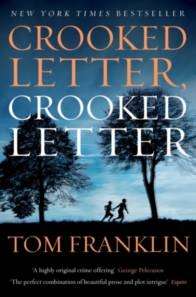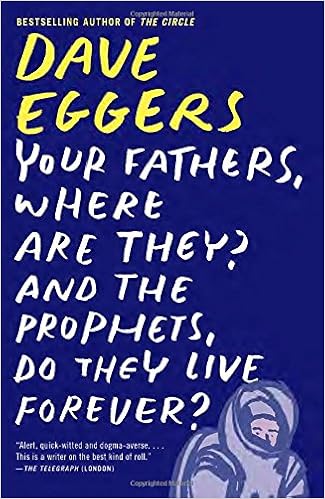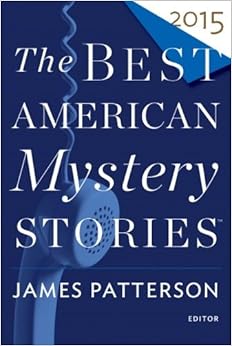Like most rules, some work and some don't. Starting with the weather didn't hurt The Red Badge of Courage ("The cold passed reluctantly from the earth, and the retiring fogs revealed an army stretched out on the hills, resting") or Raymond Chandler's "Red Wind" ("There was a desert wind blowing that night"). I do, however, like the idea of beginning with action ("They threw me off the hay truck about noon"--The Postman Always Rings Twice) or implied action ("The grandmother didn't want to go to Florida"--Flannery O'Connor's "A Good Man Is Hard to Find"). Most of all, I like openings that are intriguing enough to make the reader want to keep reading.
I'm paraphrasing here, but I remember what the late great writing instructor Jack Bickham once said, describing a conversation with one of his students about story openings:
TEACHER: Your problem is, you started your story on page 7.
STUDENT: What? No I didn't--I started it on page 1. See?
TEACHER: No, you started typing on page 1. You started your story on page 7.
Bickham believed that you should start as far along in the story as possible. That way you can begin with something happening, and let the preliminary information seep in later, as (and if) needed. Author L. Sprague Decamp is credited with the quote "Shoot the sheriff on the first page." In fact, if the story's short, shooting him in the first paragraph might be even better. Or in the first line.
As for first lines, here are a few from my own short stories. Alas, I doubt these opening sentences will ever show up as case studies in the writing classes of the future, but they do suit my purposes for this column, because I can remember exactly what I was trying to convey when I came up with them:
Jason Plumm lay on the beach for five hours before he was found.
--"The Blue Wolf," AHMM
Here, I wanted to introduce all kinds of questions. Why was he there? What had happened to him? Where was he, that was so isolated he wasn't discovered sooner? What will happen to him after his rescue, if indeed the purpose of those who found him was to rescue him?
 Ed Parrott was cleaning his gun by the campfire, a hundred yards south of the herd, when the stranger stepped from the shadows.
Ed Parrott was cleaning his gun by the campfire, a hundred yards south of the herd, when the stranger stepped from the shadows.--"The Pony Creek Gang," Reader's Break
One helpful hint about openings is to try to inject "change" of some kind into a character's life, whether it's death, divorce, marriage, relocation, a different job, the arrival of a new face in town, etc. We as human beings are wary of changes: If the protagonist feels threatened (and if Parrott doesn't, he ought to be), the reader will also feel that tension.
Susan Weeks had never seen a monster before.
--"The Wading Pool," Spinetingler Magazine
I've never seen one either, but I can imagine perfectly the one Susan saw in that story. Here I just wanted something scary, right away, to happen to my protagonist.
At 8:40 on a clear night in July, Jesse Pratt escaped from Building A at Crow Mountain State Penetentiary, stole a pickup from the staff parking lot, and promptly drove it into a lake fifty yards away.
--"Weekend Getaway," Pages of Stories
Another rule of story beginnings is to try to quickly identify as many as possible of "the five W's": what's happening, who's it happening to, why's it happening, when is it, and where is it. In this one, I think I managed to cover all of them in that opening sentence.
"What I can't figure out," Nate said, as he lay in the dirt behind a clump of cactus near Rosie Hapwell's house, "is why you married that idiot in the first place."
--"Saving Mrs. Hapwell," Dogwood Tales Magazine
More questions. Who are these people, and why are they hunkered down in the desert? Are they hiding? Who from? Rosie's husband, maybe? If so, is Nate a relative? A good Samaritan? Her lover? Hopefully, the reader will want to find out.
Sara Wilson was almost asleep when she heard her roommate scream.
--"Poetic Justice," Woman's World
One last "tip" that I try to keep in mind: whenever possible, start with action. Things are happening, and the plot is already moving forward. The obvious question here is What caused her roommate to scream?
Great first sentences set the stage for what comes next, and some are so powerful they'll be remembered forever. Here are twenty that won't be remembered forever (they're more opening lines from my own stories), but I like 'em anyway:
All things considered, Jerry thought, it wasn't a bad day to die.
--"The Last Sunset," Dream International Quarterly
Dave Cotten sat on his back porch with a .38 revolver in his lap, staring at nothing in particular.
--"Blackjack Road," The Strand Magazine
Rudy Tullos was in love with his neighbor.
--"The Garden Club," Eureka Literary Magazine
 At three a.m. Alice Howell jerked awake.
At three a.m. Alice Howell jerked awake.--"The Range," Mystery Time
The two brothers lived together in the city at the end of the valley at the foot of the great blue mountains.
--"Custom Design," Lines in the Sand
Lou Rosewood stepped into the laboratory, closed the door behind him, and locked it.
--"A Place in History," T-Zero
Rose Cartwright was sipping coffee and knitting a blue sweater for her grandson when she heard the tinkle of the bell on the front door of the shop.
--"Rosie's Choice," SMFS Flash and Bang anthology
Jimmy should be back by now, Karen thought.
--"Night Watchers," Short Stuff
Hank Stegall saw her as soon as she stepped out of the building.
--"Ladies of the North," Phoebe
Tom stood alone in the hallway, staring at the number on the door in front of him.
--"Vital Signs," Red Herring Mystery Magazine
Catherine Munsen was less than thrilled about her job.
--"A Thousand Words," Pleiades
"Get in the truck!" Morton said, as he pushed through the door of the quick-stop and marched toward his pickup.
--"Lost and Found," Writers on the River
"I know you have my grandpa's gun," Eddie said.
--"The Early Death of Pinto Bishop," Writer's Block Magazine
 Jack Hollister woke up in a room he'd never seen before: two doors, three windows, bare walls, no furniture.
Jack Hollister woke up in a room he'd never seen before: two doors, three windows, bare walls, no furniture.--"High Places," After Death anthology
The dead woman lay in a pecan orchard fifty yards from the road.
--"Oversight," Futures Mysterious Anthology Magazine
Around nine a.m. Billy Roland saw the water tower and the first cluster of buildings in the distance, steered his rented Ford to the shoulder of the road, and stopped.
--"Saving Grace," The Saturday Evening Post
--"Greased Lightnin'," The Atlantean Press Review
Sheriff Lucy Valentine trudged up the muddy slope to find the first rays of the sun peeking over the horizon and an ancient purple gas-guzzler parked beside her patrol car.
--"Traveling Light," Sherlock Holmes Mystery Magazine
The scariest day of my life--and the most wonderful--happened when I was ten years old.
--"The Winslow Tunnel," Amazon Shorts
The old man was popping the last of the breakfast biscuits into his mouth when the door crashed open.
--"Newton's Law," Western Digest
Enough of that. Here's the good stuff--a dozen of my favorite opening sentences from both novels and shorts:
I turned the Chrysler onto the Florida Turnpike with Rollo Kramer's headless body in the trunk, and all the time I'm thinking I should have put some plastic down.
--Gun Monkeys, Victor Gischler
Fedship ASN/29 fell out of the sky and crashed.
--"Beachworld," Stephen King
What was the worst thing you've ever done?
--Ghost Story, Peter Straub
 The magician's underwear has just been found in a cardboard suitcase floating in a stagnant pond on the outskirts of Miami.
The magician's underwear has just been found in a cardboard suitcase floating in a stagnant pond on the outskirts of Miami.--Another Roadside Attraction, Tom Robbins
He rode into our valley in the summer of '89.
--Shane, Jack Schaefer
You better not never tell nobody but God.
--The Color Purple, Alice Walker
The Rutherford girl had been missing for eight days when Larry Ott returned home and found a monster waiting in his house.
--Crooked Letter, Crooked Letter, Tom Franklin
I was fifteen when I first met Sherlock Holmes.
--The Beekeeper's Apprentice, Laurie R. King
Your father picks you up from prison in a stolen Dodge Neon, with an 8-ball of coke in the glove compartment and a hooker named Mandy in the back seat.
--"Until Gwen," Dennis Lehane
It was a bright, cold day in April, and the clocks were striking thirteen.
--1984, George Orwell
Every time they got a call from the leper hospital to pick up a body, Jack Delaney would feel himself coming down with the flu or something.
--Bandits, Elmore Leonard
We were about to give up and call it a night when somebody dropped the girl off the bridge.
--Darker Than Amber, John D. MacDonald
How could a reader NOT keep going, after those?
Okay, what do you think, about all this? Do you find opening lines easy to write? Difficult? Are there specific things you try to do in an opening, like start with action or dialogue or a catchy situation? Do you try to introduce your main character, call him Ishmael, have her dream of Manderley, make his last camel collapse at noon, and get the plot rolling? What are some of your favorite opening sentences, from your own work or that of others?
In an interview with The Atlantic, Stephen King said first sentences are "a tricky thing." But he added that he was sure about one thing: "An opening line should invite the reader to begin the story. It should say: Listen. Come in here. You want to know about this."
King's good at doing that. Here's an example:
"The Man in Black fled across the desert, and the Gunslinger followed."
So did millions of readers.









































